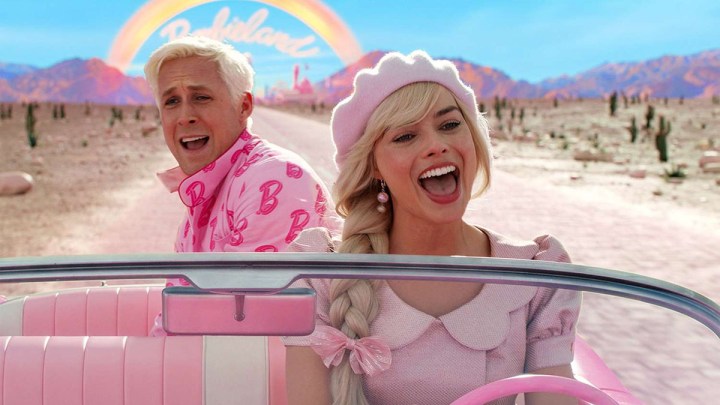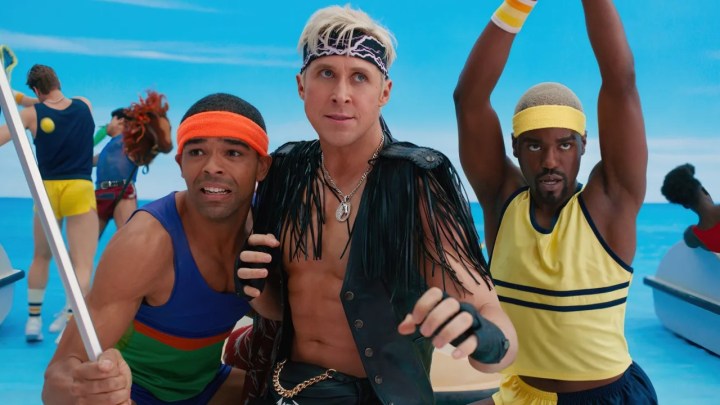Hi, Barbie! Greta Gerwig’s highly anticipated comedy Barbie finally hit theaters, taking audiences to the pink-colored world of Barbieland. Margot Robbie stars as Barbie opposite Ryan Gosling as Ken, and they lead an impressive ensemble including America Ferrera, Ariana Greenblatt, Michael Cera, Issa Rae, and Will Ferrell. The film follows Stereotypical Barbie, who begins experiencing weird occurrences that lead her to visit the real world alongside her perennial companion, Ken.
Barbie has long been considered among the most exciting films set to open in July 2023, and it’s currently tracking for a massive opening weekend of anywhere between $100 million and $140 million. The film will surely satisfy audiences looking for a colorful dose of childhood nostalgia starring the world’s most famous doll, although its strong message might be polarizing in the long run. However, Barbie handles heavy and potentially thorny themes with impressive skill and sticks the landing with a brilliant and hopeful ending that will leave audiences feeling as cheery and unabashedly hopeful as a Barbie doll.
Note: This article contains major spoilers for Barbie.
Welcome to the real world, Barbie

Barbie follows Margot Robbie as Stereotypical Barbie. She lives in Barbieland, ruled by the Barbies, who always have a perfect day. Unlike the Barbies, the Kens in Barbieland are considered useless and often taken for granted. Stereotypical Barbie doesn’t have a career or defined purpose like her fellow Barbies, although that never seemed to bother her. That is until she begins experiencing sudden and puzzling feelings of confusion, insecurity, self-awareness, and even death. Her quest for answers takes her to the real world with her companion, Stereotypical Ken, by her side.
In the real world, Stereotypical Barbie sees how different things are. Women are the ones who are taken for granted, while men rest comfortably at the top of the food chain. Inspired by his newfound knowledge of the patriarchy, Stereotypical Ken returns to Barbieland, determined to alter the balance between the Barbies and Kens. Meanwhile, Stereotypical Barbie befriends Gloria, a Mattel employee with a contentious relationship with her daughter, who rediscovered her Barbie dolls and began playing with them. Gloria’s frustrations were passed onto the doll, explaining Stereotypical Barbie’s existential crisis. Thus, Stereotypical Barbie takes Gloria and her teenage daughter, Sasha, back to Barbieland, where things have changed drastically.
Back to Kendom

In Stereotypical Barbie’s absence and with his newfound knowledge of the patriarchy, Stereotypical Ken has mounted a revolution. He and his fellow Kens have brainwashed the Barbies, turning them into subservient and unambitious women who live to serve their men. Stereotypical Ken then coldly casts Stereotypical Barbie out, telling her it’s her turn to feel unimportant. Depressed and feeling useless, Stereotypical Barbie succumbs to her pain. However, Gloria’s words inspire her, and she decides to reverse the brainwashing and take Barbieland back before the Kens turn it into Kendom.
Once the Barbies are free again, they manipulate the Kens and turn them against each other, leading them to an all-out battle. During the fight, the Kens realize they are all the same as they share identical feelings of inadequacy and unimportance. They reconcile during the incredible musical number “I’m Just Ken” and return to find the Barbies have taken back their land and restored the status quo. The Barbies understand that their treatment of the Kens has been unfair. Thus, they set out to build a more fair world for everyone while maintaining decisive control over Barbieland.
What happens at the end of Barbie?
Stereotypical Barbie and Ken apologize to each other, with Ken painfully admitting he only exists to love her. She rejects the notion and encourages him to find his identity as an individual. Ken thanks her and begins a path of self-discovery away from her. Still unsure of who she is or what she wants, Stereotypical Barbie meets with Ruth Handler, the creator of Barbie, who explains Barbie’s story has no ending. Inspired by her words, Stereotypical Barbie decides to become a human and returns to the real world with Gloria and Sasha. The film ends with Stereotypical Barbie, now named Barbara Handler, facing her first test as a human: a gynecologist appointment.
Barbie has no post-credit scenes, although fans can always enjoy the incredible music playing over the credits.



